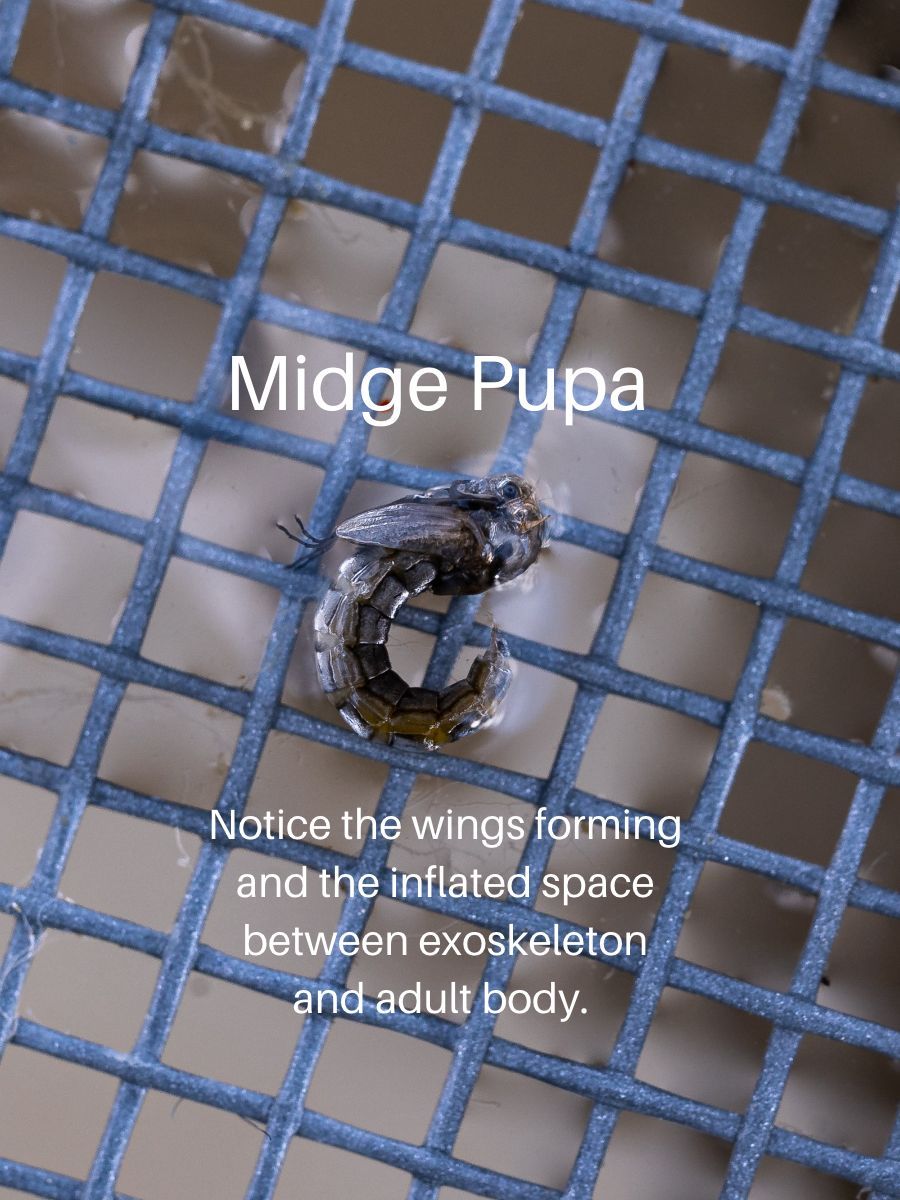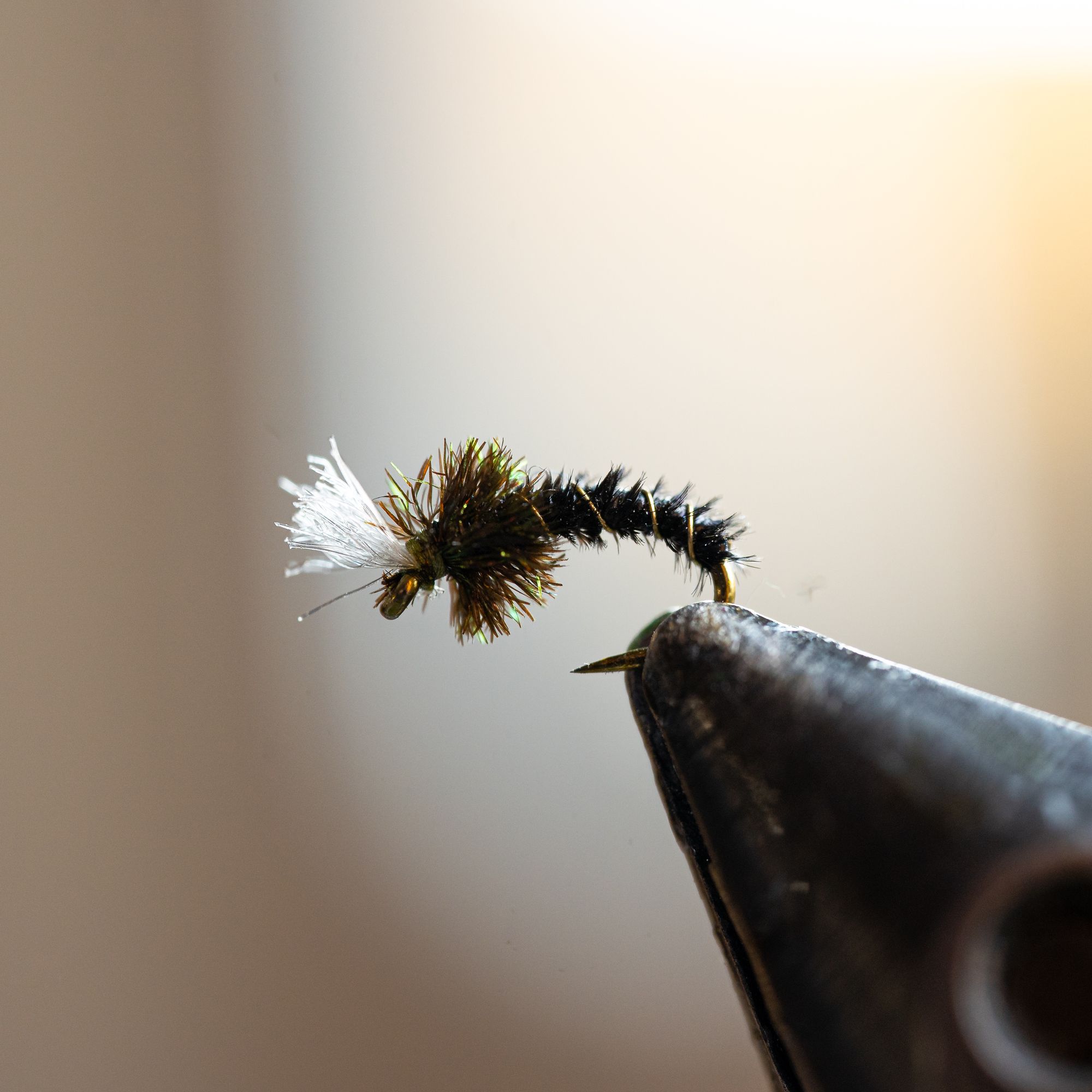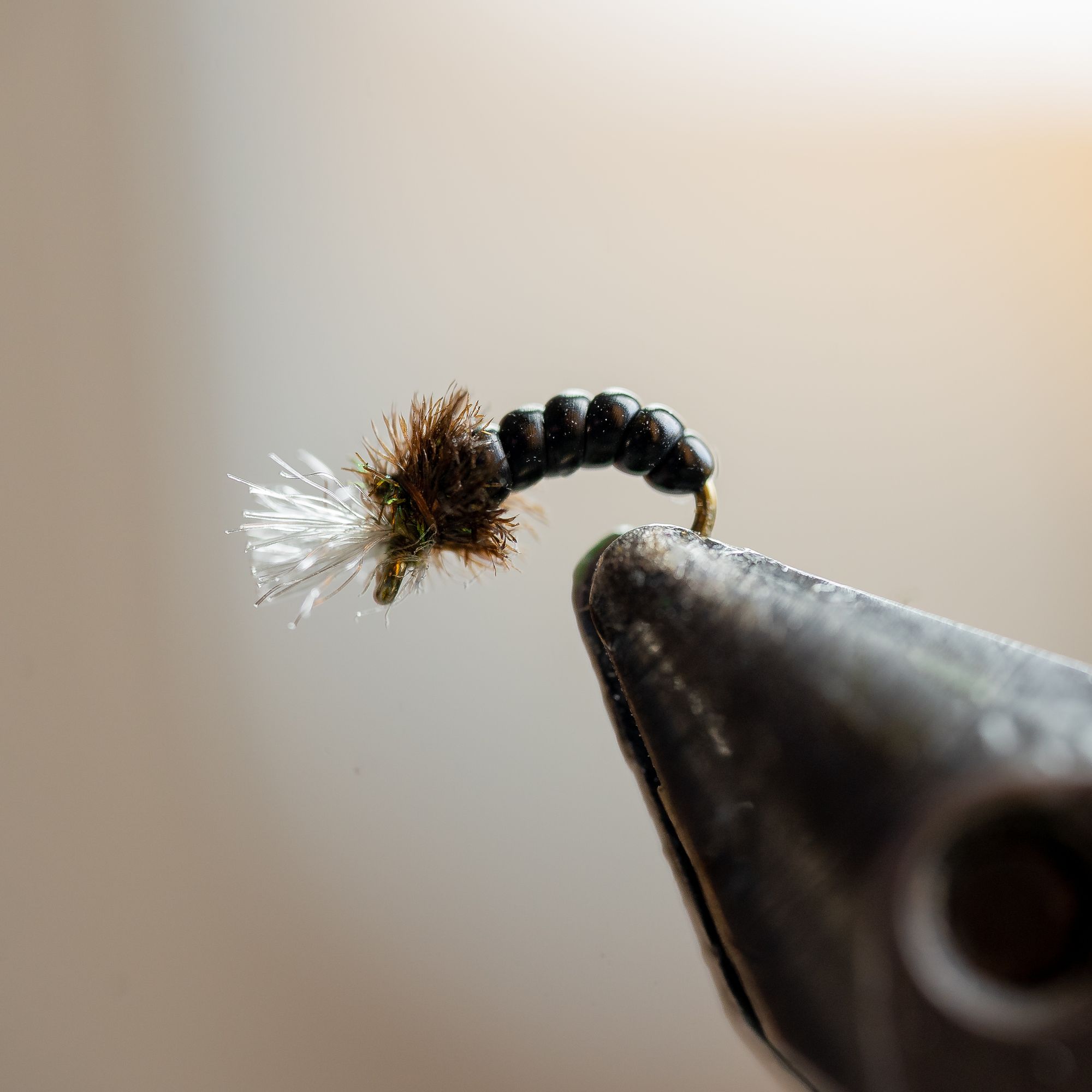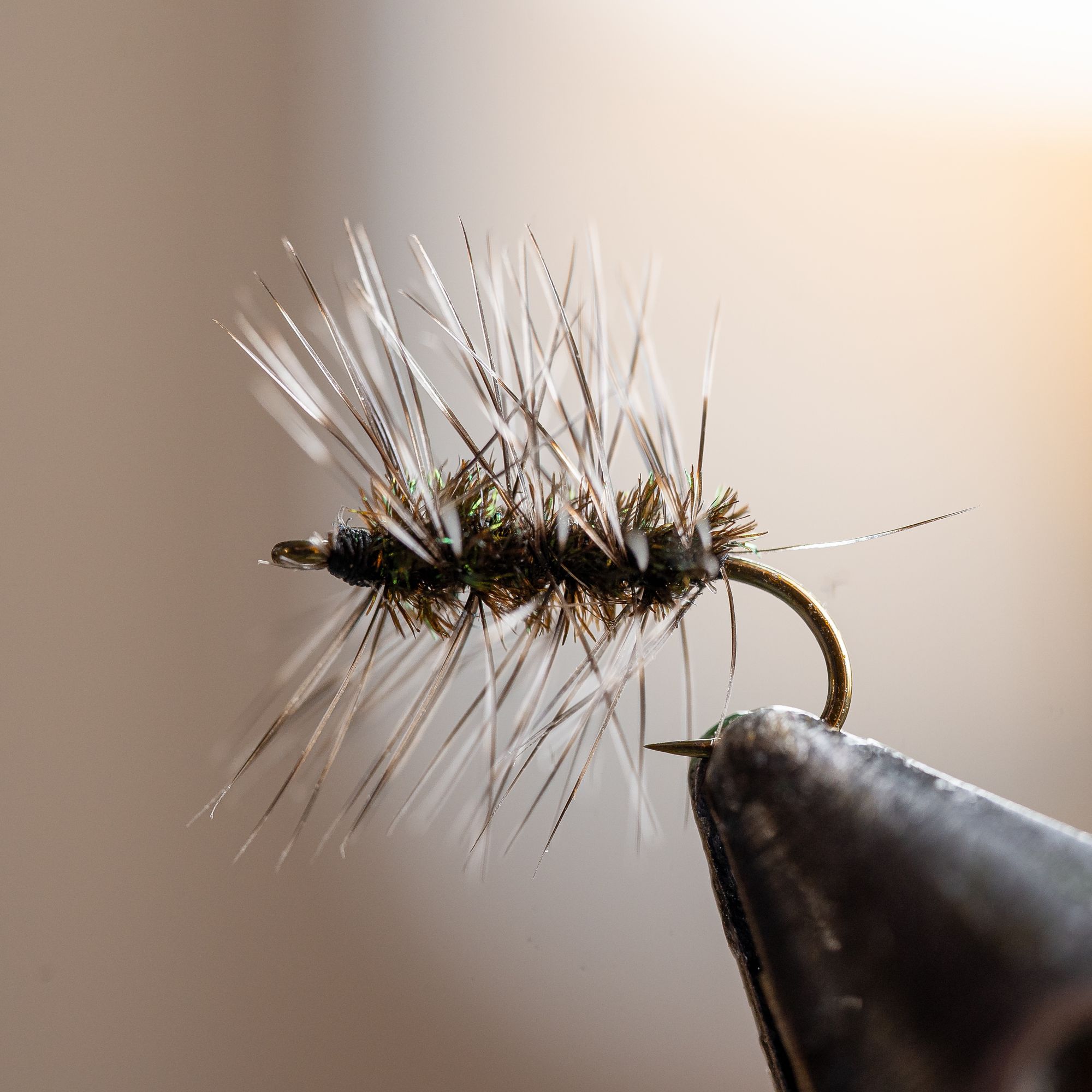Understanding Midges in The Crowsnest River and Oldman River

Early spring brings with it an interesting fishing opportunity on the tail waters below the Oldman River Dam and the highly productive streams like the Crowsnest. These streams are full of small (5 mm) midge larvae (wormlike) that live in the vegetation and sediment.

Nymph fishing with a midge larvae is a good idea anytime of year in these waters but particularly in the spring. These are simple patterns to tie in colours like red, green, brown, and black. Popular patterns include zebra midges or disco midges.
However, for my money it is much more interesting when the larvae pupate. The pupa forms within a cocoon in the sediment or vegetation. It then emerges and slowly floats to the surface.



They gain positive buoyancy by trapping gases between the pupal exoskeleton and the fully formed adult within. The trapped gasses give the emerging pupae a silvery transparency that many pupal patterns try to replicate.
Other characteristics are noticeably larger head regions (the adult legs and wings are bound up within) and white gills. Trout gorge themselves on the slowly rising pupa chasing them right to the surface, which can sometimes look like a surface rise.
I learned this lesson one spring on the Missouri River below the Holter Dam. Three fish were “rising” regularly in a slow eddy but ignored all the small mayfly and Midge surface patterns I threw at them.
I took a time out on the riverbank to watch the trout feed and noticed that there was no tell-tale air bubble indicating a fly being sucked off the surface and the only part of a trout I was seeing was the dorsal fin on the back of the trout as it snatched a pupa just below the surface.
I tied on a small pupa pattern that suspended a couple of feet below the mayfly dry fly pattern I already had on and caught all 3 trout in short order.
A powerful lesson.

Once the pupae reach the surface the adult midges emerge from the pupal shuck. The adults look very similar to small mosquitos but they do not bite you! The adults live for a few days to a few weeks and can reach very large numbers sometimes aggregating in clusters on the surface.


There are patterns for individual midges, however unless you enjoy the challenge of catching fish on size 20 and smaller hooks, I recommend trying patterns that imitate clusters of midges. The classic Griffith’s Gnat is a great example and easy to tie.

Member discussion